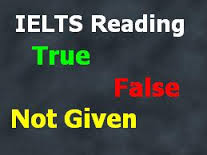 If you want to get a high mark, you should be able to logically connect your ideas both in speaking and in writing. Below is the list of the most common linking words. Choose the ones you feel most comfortable with and use them in your speech and essays. Continue reading
If you want to get a high mark, you should be able to logically connect your ideas both in speaking and in writing. Below is the list of the most common linking words. Choose the ones you feel most comfortable with and use them in your speech and essays. Continue reading
Writing 2: How to write a successful overview (summary)
 When you describe a graph, your essay should consist of 3 parts: introduction, overview (summary) and the main part. The conclusion is not necessary in this piece of writing.
When you describe a graph, your essay should consist of 3 parts: introduction, overview (summary) and the main part. The conclusion is not necessary in this piece of writing.
Introduction is the easiest part: just paraphrase the question of the task (don’t copy!!!, but paraphrase, that is write the same thing with your own words). Continue reading
Speaking task 2: Useful phrases for telling your story + example answer
 In part 2 of the IELTS speaking test, you should speak for 2 minutes describing some experience from your life. The phrases below are universal and can be used for any question. Use them when you are practicing speaking part 2. Gradually you’ll memorise them and will be able to use them readily at the actual test. Continue reading
In part 2 of the IELTS speaking test, you should speak for 2 minutes describing some experience from your life. The phrases below are universal and can be used for any question. Use them when you are practicing speaking part 2. Gradually you’ll memorise them and will be able to use them readily at the actual test. Continue reading
Reading: Matching headings – explained
 This type of question is similar to matching information. But here you are not looking for specific information, you are looking for the main idea. There is a list of headings which are identified by Roman numerals (i, ii, iii, etc.). Continue reading
This type of question is similar to matching information. But here you are not looking for specific information, you are looking for the main idea. There is a list of headings which are identified by Roman numerals (i, ii, iii, etc.). Continue reading
Reading: True/false/not given – explained
 In this question you see a number of statements and you must decide if they are true, false or not given. You must write ‘True’, ‘False’ or ‘Not given’ in the answer sheet.
In this question you see a number of statements and you must decide if they are true, false or not given. You must write ‘True’, ‘False’ or ‘Not given’ in the answer sheet.
If you can find exactly the same sort of information in the text (the words might be different but the meaning is absolutely the same), it means that the statement is TRUE.
If the information in the text contradicts the statement, it means that it’s FALSE. A good way to check this is to transform the statement into a question, and ask yourself: “Does the text say this?”. Continue reading
Reading: Which questions to do first?
 Group 1. In IELTS Reading there are questions relating to specific information in the text, such as Multiple choice, True/false/not/given, Yes/no/not given, gap-fill, sentence completion, etc. Continue reading
Group 1. In IELTS Reading there are questions relating to specific information in the text, such as Multiple choice, True/false/not/given, Yes/no/not given, gap-fill, sentence completion, etc. Continue reading
Reading: Don’t waste your time reading the whole text
 Why? Firstly, remember that you should spend 15, 20 and 25 minutes on each text respectively – you don’t have time to read the whole text. Secondly, even if you are a fast reader, under the stressful exam conditions you are unlikely to remember what you’ve read, and to easily locate the information you need when you start answering the questions. So don’t read the text, but start answering the questions. Usually the questions are given in the logical order. For example, you can find the information for question 1 in paragraph 1; the information for question 2 – in paragraph 2, etc. But not always!
Why? Firstly, remember that you should spend 15, 20 and 25 minutes on each text respectively – you don’t have time to read the whole text. Secondly, even if you are a fast reader, under the stressful exam conditions you are unlikely to remember what you’ve read, and to easily locate the information you need when you start answering the questions. So don’t read the text, but start answering the questions. Usually the questions are given in the logical order. For example, you can find the information for question 1 in paragraph 1; the information for question 2 – in paragraph 2, etc. But not always!
Here is the strategy: Continue reading
Reading: Manage your time well
Listening: Gap-fill strategy
In some IELTS listening tasks you have to fill in the gaps. For example, you hear a conversation and your task is to fill in the booking form below:
Listening: Underline the key words in the questions before you start listening
 You have to answer 40 questions in the listening section, but not all at once. The questions are divided into groups of 5-6 questions in the recording. Each time you have about 20 seconds to look at them before a listen to the part of the recording containing the answers to these questions. 20 seconds are plenty of time if you use them thoughtfully.
You have to answer 40 questions in the listening section, but not all at once. The questions are divided into groups of 5-6 questions in the recording. Each time you have about 20 seconds to look at them before a listen to the part of the recording containing the answers to these questions. 20 seconds are plenty of time if you use them thoughtfully.

